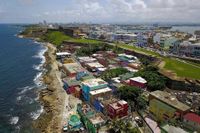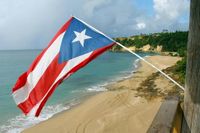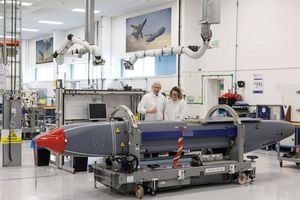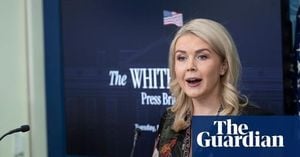Puerto Rico, long a vital yet vulnerable outpost in the U.S. economic landscape, stands at a crossroads. With the global trade order shaken by the Trump Administration’s protectionist policies, the island finds itself both blessed with new opportunities and burdened by old, persistent challenges. As manufacturers look to nearshore operations and the United States seeks to bring production closer to home, Puerto Rico’s manufacturing base and unique federal status could make it a key player in the new trade reality. But as history and present-day realities make clear, the road to prosperity is anything but straightforward.
Puerto Rico’s economic story is one of dramatic swings. Back in 1976, Section 936 of the U.S. tax code was established, exempting U.S. companies from federal income tax on profits earned in Puerto Rico and other territories. This single provision triggered a boom in the island’s manufacturing sector, especially in pharmaceuticals, petrochemicals, and technology. Billions in corporate income poured in, swelling the local economy and creating jobs. But by the 1990s, Section 936 was under fire in Washington, labeled as corporate welfare. The tide turned with the Small Business Job Protection Act of 1996, which began a decade-long phase-out of the tax break.
The consequences were severe. As the exemption vanished, so did jobs and investment. According to Duke University economist Juan Carlos Suárez Serrato, "for each person laid off from a firm affected by the tax credit repeal in a county with an average level of Section 936 exposure, the county lost an additional 3.6 jobs." Wages stagnated, housing prices dipped, and unemployment soared. By 2006, the year Section 936 was fully repealed, Puerto Rico entered an 11-year recession. The economy contracted by 10%, the population shrank by another 10%, and unemployment climbed to nearly 15% in 2014. Manufacturing employment plummeted from 159,000 in 1995 to just 74,000 by 2016, while investment as a share of GDP fell from 20.7% in 1999 to a meager 8.25% in 2016.
Yet, Puerto Rico has shown resilience. By 2025, the unemployment rate had fallen to a near-historic low of 5.3%. Manufacturing jobs have rebounded slightly to 82,600, the public debt has been restructured, and the most recent three years have seen positive GDP growth. Manufacturing remains the backbone of Puerto Rico’s economy, accounting for 46% of GDP and $61.2 billion in exports in 2023 alone. Pharmaceutical and medicine manufacturing, in particular, is a powerhouse, with $20.2 billion in exports in 2024—making up 17.6% of total U.S. pharmaceutical exports.
At first glance, the Trump Administration’s push for tariffs and onshoring might look like a boon for the island. With median wages at 60% of the U.S. average, Puerto Rico offers cost advantages for companies seeking to relocate production stateside. Resident Commissioner Pablo José Hernández Rivera, the island’s sole representative in Washington, told HPR, "Puerto Rico is uniquely positioned to help the U.S. in its nearshoring and reshoring efforts because of its long history with the pharmaceutical and manufacturing industries... Puerto Rico –– because it is not a state –– has unique tax advantages while, at the same time, being under U.S. sovereignty enjoys the protections and the legal benefits that companies in the U.S. have."
But the picture quickly grows complicated. The Trump Administration’s repeated threats to impose 25% tariffs on pharmaceuticals could backfire, especially for Puerto Rico. According to an Ernst & Young report, such tariffs would increase U.S. drug costs by nearly $51 billion a year and could raise consumer prices by as much as 12.9%. This would not only undercut American competitiveness in the sector but also put Puerto Rico’s pharmaceutical exports under intense pressure. The island’s future in a protectionist world depends on whether it can attract companies looking to reshore—while navigating the pitfalls of increased costs and trade uncertainty.
And then there’s the matter of infrastructure. Puerto Rico’s energy grid is, to put it bluntly, in crisis. Years of neglect, underinvestment, and the havoc wrought by Hurricane María have left the island with a 700–850 megawatt energy generation deficit. LUMA, the private utility overseeing power transmission and distribution, projects 125 selective blackouts over the next six months—a grim forecast echoed by the island’s grid operator, which expects 93 outages by the end of the northern summer of 2025, according to recent reports.
Blackouts have become routine, a fact of life for residents and businesses alike. Representative Héctor Ferrer Santiago, Minority Leader for the Popular Democratic Party in the Puerto Rican House of Representatives, warned, "Attracting manufacturing will be very complicated. If [a firm] wants to invest in Puerto Rico, for the next couple of years they will have to bring their own energy generation, as the island lacks the necessary energy to accommodate additional manufacturing." He called the faltering grid "one of our country’s largest problems."
Billions in federal aid—$20 billion, to be exact—have been earmarked by Congress to rebuild the grid after Hurricane María. But the money has been slow to arrive, bogged down by federal permitting processes and local mismanagement. The Puerto Rico Electrical Power Authority, the government-owned utility, has a history of misallocated funds, underinvestment, and corruption scandals. "The federal government is aware of the energy crisis, and it has assigned billions of dollars for the energy grid’s reconstruction. However, most of the responsibility falls on the local government and the private utility companies that are in charge of administering Puerto Rico’s energy grid, and what the federal government can do is increase oversight and accelerate the permit review process for a lot of the reconstruction work that is pending," Hernández Rivera explained.
Energy isn’t the only hurdle. High transactional costs and bureaucratic red tape are notorious barriers to business. Economist José Joaquín Villamil, CEO of Estudios Técnicos, Inc., described a drawn-out process just to rent office space: "It was the same zoning, the same use, no new constructions. And that took three months, three months and a half." The World Bank’s Doing Business 2020 report backs him up: registering property in Puerto Rico takes an average of 190 days, and construction permits require about 22 procedures—compared to just 23.6 days and 12.7 procedures in OECD countries. "You multiply this by [thousands of] new businesses [...] and you see the huge costs this adds to Puerto Rico," Villamil said.
Puerto Rico’s heavy dependence on foreign capital and imported goods leaves it vulnerable. The island imports about 85% of the food it consumes. Recognizing this, Representative Ferrer Santiago introduced legislation to establish a comprehensive food security plan and boost incentives for local farmers, noting, "This issue takes on even greater significance with Donald Trump’s protectionist public policy." If tariffs raise prices, everyday Puerto Ricans will feel the pinch—yet the underlying problem is deeper than any one policy.
Villamil argues for a new approach: "No nation can solely develop through foreign investment [...] Stimulating local capital has many advantages. For example, the effects in terms of income, employment, etc., are greater. Local businesses create more jobs; they are more labor-intensive. And additionally, producing for the local market reduces dependence on imports."
Puerto Rico’s story is a cautionary tale of boom, bust, and resilience. As the world turns inward and trade tensions rise, the island’s future will depend not just on external investment but on strengthening local institutions, modernizing infrastructure, and building a more self-sufficient economy. Only then can Puerto Rico move beyond its dependency trap and realize its promise as a resilient economic force within the United States and beyond.





